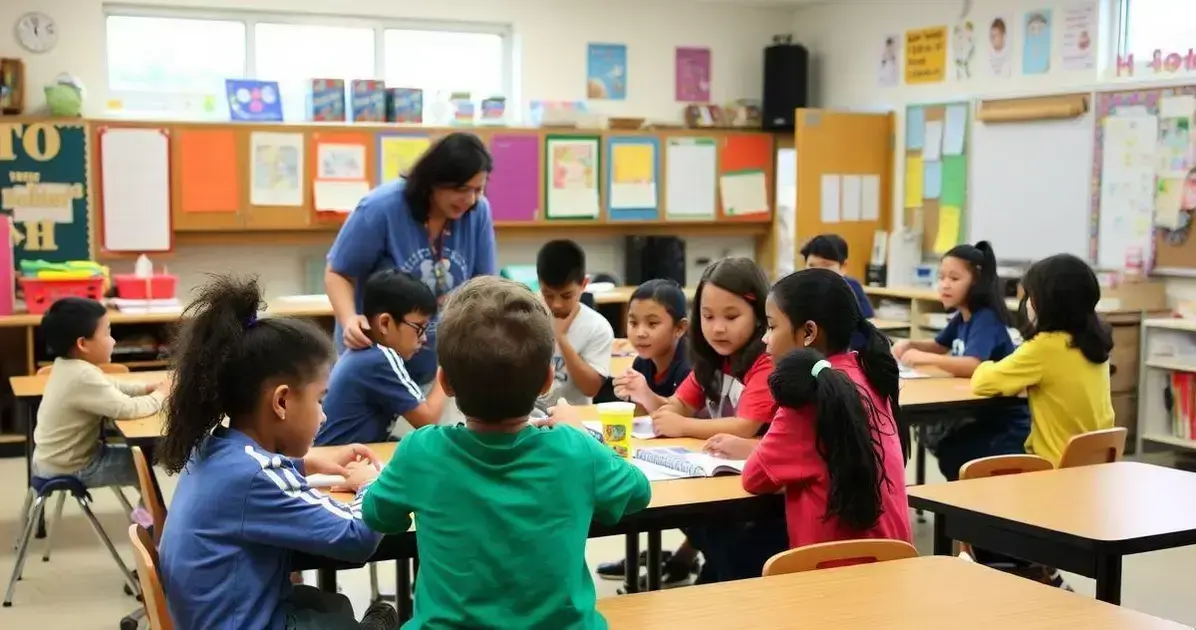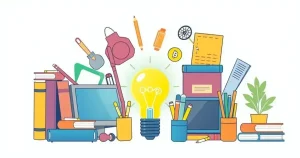Anúncios
Special education programs provide unique opportunities for children with diverse learning needs.
These tailored approaches foster growth and nurture potential. Every child deserves a chance to shine!
Understanding Special Education Programs
Special education programs are crucial to support children with diverse needs. Learn how they can change lives!
Anúncios
Special education programs serve children with unique learning needs. They offer tailored support to ensure each child thrives.
With the right tools, their potential can shine bright! Keep reading to discover how these programs create transformative experiences for families and students alike.
Key Benefits of Special Education Programs
Special education programs provide essential, tailored support for students with diverse learning needs, ensuring they have equal opportunities to succeed both academically and socially.
Anúncios
These programs are designed to address challenges such as learning disabilities, developmental delays, speech and language difficulties, and emotional or behavioral disorders.
Through personalized teaching strategies, specialized resources, and adaptive technologies, special education helps bridge learning gaps and empowers students to engage more actively in the classroom.
In addition to academic support, these programs focus on building social skills, self-confidence, and independence, preparing students for future success in school and beyond.
By recognizing each child’s unique strengths and challenges, special education not only enhances learning outcomes but also fosters inclusion and understanding within the school community.
With the right guidance, resources, and encouragement, students can unlock their full potential and thrive in all areas of life.
Eligibility Criteria for Special Education Programs

Special education programs are designed to support students with learning differences, developmental challenges, or disabilities, ensuring they receive the resources and assistance necessary to succeed.
These programs cater to a wide range of needs, from mild learning difficulties to more complex physical, cognitive, or emotional conditions.
Eligibility is typically determined through a thorough evaluation process, which may include academic assessments, psychological testing, and input from teachers, parents, and specialists.
This evaluation helps identify a student’s specific challenges and strengths, ensuring the support plan is tailored to their individual needs.
Common qualifying conditions can include learning disabilities, speech and language impairments, autism spectrum disorders, and emotional or behavioral disorders.
They can also include hearing or vision impairments and certain physical disabilities.
However, eligibility is not solely based on a diagnosis—students must also demonstrate that their condition significantly impacts their ability to learn in a traditional classroom setting.
Once deemed eligible, students receive an Individualized Education Program (IEP) or equivalent plan, which outlines personalized goals, accommodations, and support services.
This ensures that each child can access the curriculum in a way that works best for them, promoting both academic achievement and social inclusion.
By understanding and meeting the eligibility criteria, families and educators can open the door to a richer, more supportive educational experience.
This experience empowers students to reach their full potential and prepares them for lifelong success.
How to Apply for Special Education Programs
Special education programs play a vital role in ensuring that students with unique needs receive the individualized support necessary for academic, social, and emotional growth.
These programs provide tailored learning opportunities, specialized resources, and professional guidance that help children overcome challenges and reach their full potential.
The application process usually begins with identifying a student’s needs.
Parents, teachers, or school administrators can initiate this when they notice learning difficulties, behavioral concerns, or developmental delays.
Once concerns are raised, the school typically conducts a formal evaluation, which may include academic testing, psychological assessments, and observations in the classroom.
If the evaluation confirms that special education services are needed, the next step is to create an Individualized Education Program (IEP) or a similar customized plan.
This document outlines the student’s learning goals, required accommodations, and the type of support they will receive, such as specialized instruction, therapy services, or assistive technology.
Parents or guardians play an essential role throughout the process, participating in meetings, providing input on their child’s strengths and challenges, and ensuring that the plan aligns with the student’s needs.
Open communication between families and educators helps create a supportive learning environment where the child can thrive.
Applications can be made directly through the student’s current school, or in some cases, through the local education authority.
It is important to keep copies of all documentation, including evaluation reports and correspondence, to streamline the process and ensure transparency.
By understanding the application steps and advocating effectively, families can secure the right resources, opening the door to a more inclusive and empowering educational experience for their child.
Best Practices in Special Education Programs
Special education programs provide essential support for children with diverse learning needs, ensuring that every student has the opportunity to reach their full potential.
These initiatives go beyond traditional teaching methods, offering personalized learning plans that focus on each child’s strengths, challenges, and goals.
Best practices in special education start with individualized instruction.
Teachers adapt lesson plans to match different learning styles—whether visual, auditory, or kinesthetic—so that students can better understand and retain information.
This often involves breaking down complex concepts into smaller, manageable steps and using real-world examples to make learning more relatable.
Another key practice is fostering inclusive classrooms.
By integrating students with special needs into general education environments whenever possible, schools encourage social interaction, empathy, and collaboration between all learners.
Inclusion also helps reduce stigma, promoting a sense of belonging.
Collaboration between educators, specialists, and families is also critical.
Regular meetings, progress updates, and open communication ensure that everyone involved in the child’s education works toward the same objectives.
Specialists such as speech therapists, occupational therapists, and counselors often play a vital role in addressing specific developmental needs.
Additionally, best practices emphasize ongoing assessment and adjustment.
Student progress is monitored closely, and teaching strategies are adapted to ensure the child continues to advance academically and socially.
Using assistive technologies, such as speech-to-text tools or interactive learning software, can further enhance accessibility and engagement.
By implementing these best practices—personalized instruction, inclusion, collaboration, and continuous improvement—special education programs create a supportive learning environment.
This environment helps every child thrive academically. They also foster emotional and social growth.
Success Stories from Special Education Programs
 Special education programs dedicate resources to support students with unique learning challenges. These programs play a crucial role in fostering academic growth.
Special education programs dedicate resources to support students with unique learning challenges. These programs play a crucial role in fostering academic growth.
They help nurture talents and skills that might otherwise go unnoticed!
Special Education Program: Essential Pathways to Success for All
What are special education programs?
Special education programs are tailored educational services designed to meet the needs of students with disabilities or diverse learning requirements.
Why are special education programs important?
They provide necessary support and resources to help students with diverse needs succeed academically and socially.
What are the criteria for special education program enrollment?
Enrollment criteria typically include evaluation by educational professionals to determine if a student has a disability that impacts their learning.
What features make special education programs effective?
Effective programs include individualized education plans (IEPs), trained staff, and accommodations to support various learning styles.
How can families navigate special education program resources?
Families can access resources through school districts, special education advocates, and community organizations dedicated to supporting students with disabilities.
What are the real-life impacts of special education programs?
These programs can lead to improved academic achievements, increased self-esteem, and better social integration for students with special needs.







